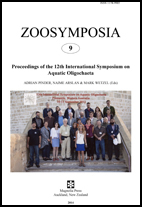Issue:
Vol. 9: 12 June 2014
Type: Article
Published: 2014-06-12
Page range: 59–69
Abstract views: 571
PDF downloaded: 636
Branchiura sowerbyi Beddard, 1892 (Oligochaeta: Naididae) as a test species in ecotoxicology bioassays: a review
Postgraduate Program in Environmental Engineering Sciences, EESC/USP. Avenida Trabalhador São-Carlense, 400, São Carlos, SP, Brazil.
Postgraduate Program in Environmental Engineering Sciences, EESC/USP. Avenida Trabalhador São-Carlense, 400, São Carlos, SP, Brazil.
bioassay
Oligochaeta
sediment quality
toxicology

